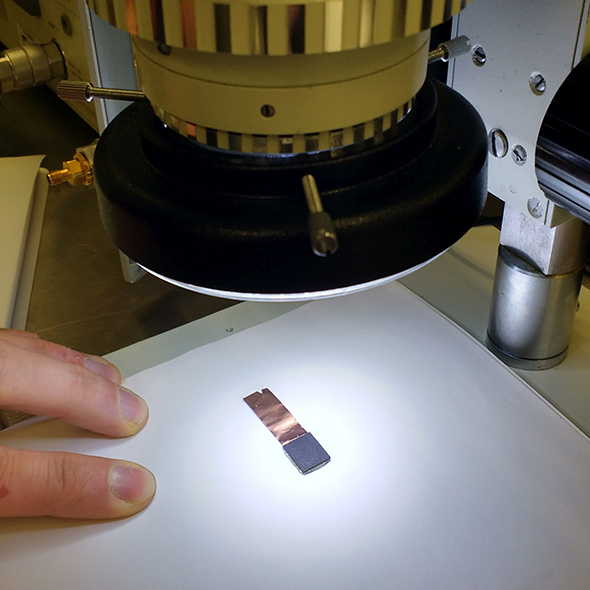Blogger: Martijn Frijlink, Associate Professor,
Centre for Innovative Ultrasound Solutions (CIUS) and University College of Southeast Norway
All ultrasound technologies in health care, maritime, and oil & gas make use ultrasonic transducers. For this reason, transducer design is a key research task of the Centre for Innovative Ultrasound Solutions (CIUS).
Ultrasonic transducers are devices that convert electrical signals into mechanical vibrations and vice versa at frequencies above the hearing limit of 20 kHz. This is comparable to loudspeakers and microphones in the audible frequency range. Ultrasonic transducers are also called ultrasound probes. So, in other words, the probes transmit and receive sound waves beyond the hearing limit
Different application areas require different types of probes in the frequency range from 20 kHz to approximately 10 MHz. The core of a probe conventionally consists of a layer of piezoelectric material, which is a material that deforms when an electric field is applied, and that can generate an electric signal when a mechanical pressure is applied. To increase the efficiency to transmit ultrasound waves into the transmission medium, e.g. water, gel, the human body, or an oil or gas pipeline, the probe needs to be matched acoustically to the propagation medium. This is typically done by applying acoustic matching layers, which are thin layers with well-defined thicknesses down to the micrometre range and with appropriate acoustic properties. Transducers can contain one to several thousand acoustic elements. All these elements need to be electrically connected to transmit and/or receive electronics. All these aspects make the design of ultrasonic transducers a multidisciplinary task that include physics, electronics, mechanics, and materials.
At the Department of Micro- and Nanosystem Technology, which is part of the Faculty of Technology and Maritime Science of the University College of Southeast Norway at Campus Vestfold in Horten, we are investigating different aspects of probes for applications in both medical, maritime, and industrial fields. Our ultrasound laboratory workshop allows the manufacturing of special custom-designed prototype ultrasound probes in the frequency range from approximately 1 to 10 MHz. These ultrasound probes can be either a single-element probe (one transducer element to transmit and receive the sound, see this Wiki article on Doppler fetal monitor) or an array probe consisting of multiple transducer elements that allows steering of the transmitted and received ultrasound beam.
One research topic that is under investigation as part of CIUS is the design and manufacturing of a dual frequency transducer for medical purposes. A dual frequency transducer can send and receive both lower and higher frequency sound. A potential application is the manipulation and detection of ultrasound contrast agents, which are tiny gas spheres that can be injected in the blood circulation for e.g. blood flow imaging. The dual frequency probe would allow for transmitting and receiving at different frequency ranges, but through the same probe surface. Such probe design could consist of several active piezoelectric layers, which can result in complex vibration modes and a more complex manufacturing procedure.
Another topic under investigation is self-heating of probes. In transmit, all electrical energy that is consumed but not transmitted into the transmission medium, is lost as heat within the probe itself. This leads to heating of the probe, and can even result in probe failure. The hypothesis is that theoretical investigation of the thermal principles behind this, and accurate modelling and measurements of temperature distributions within real ultrasonic probes, can lead to better understanding and methods in how to reduce heating problems that are currently experienced in some industrial applications.

